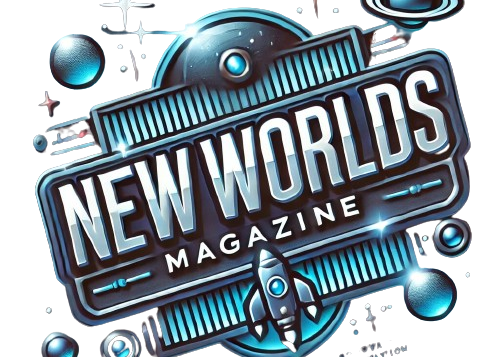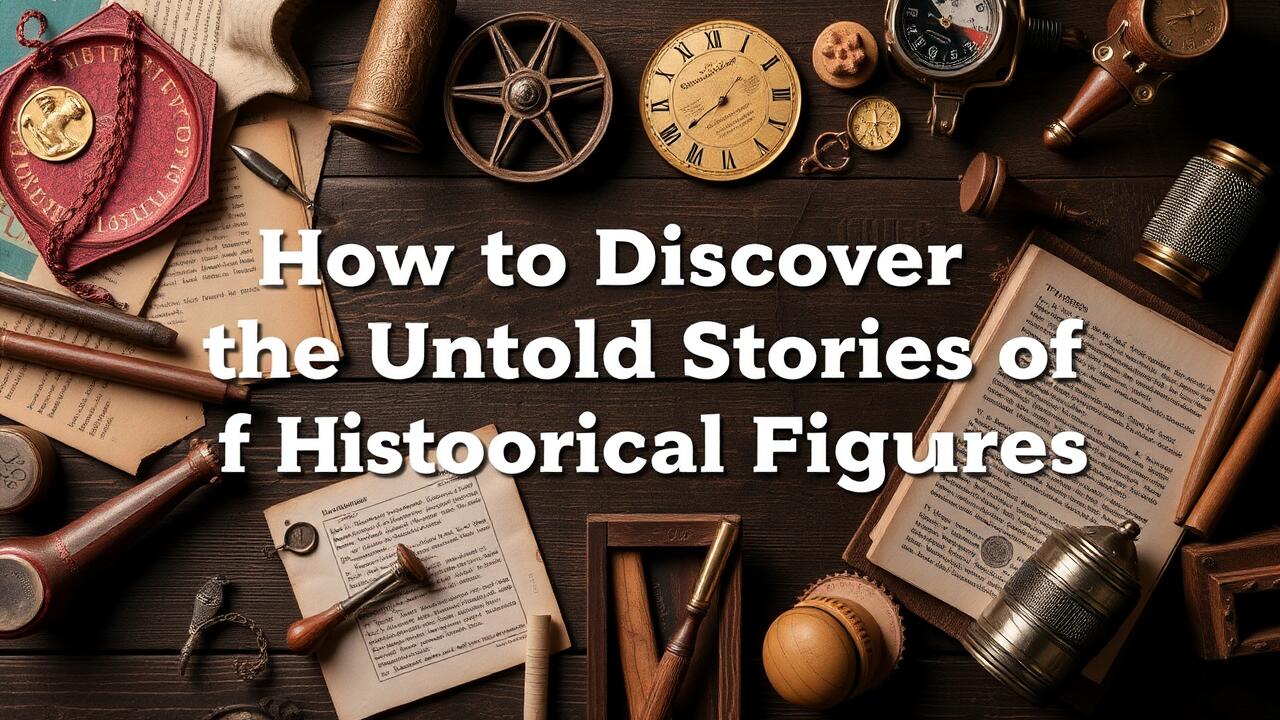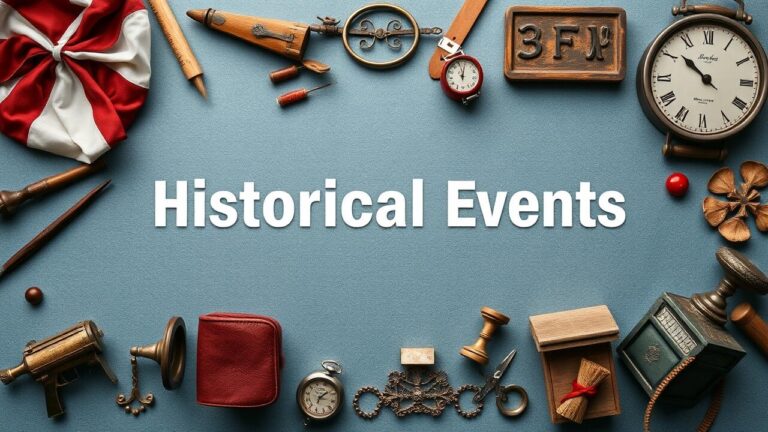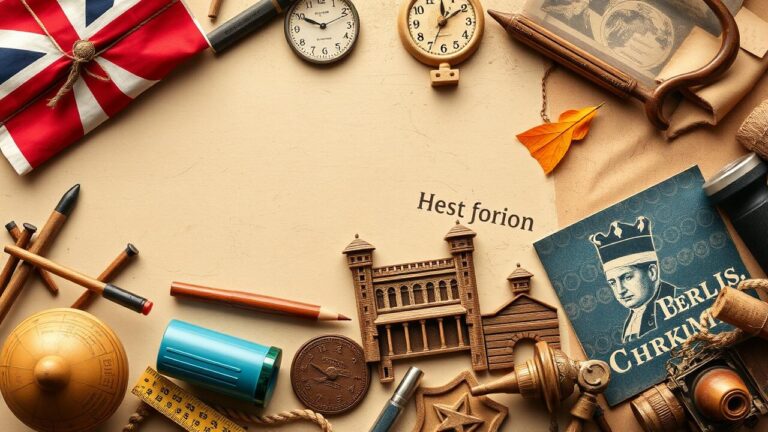Table Of Contents
How to Discover the Untold Stories of Historical Figures for Deeper Insights
Key Takeaways
- Recognizing the significance of hidden narratives in history
- Techniques for investigating overlooked tales
- Connecting with the historical backdrop
- Utilizing modern tools in research
- Partnering with specialists and local groups
- Methods for effectively sharing discoveries
How To Discover The Untold Stories Of Historical Figures | Understanding the Importance of Untold Stories
The journey of understanding the importance of untold stories often leads to the revelation of hidden figures who played pivotal roles in shaping civilization. Through methods like historical fiction and rigorous research, historians can weave a rich tapestry of narratives that highlight the complexities of human experience. From the tragedies of medieval Europe to the legends preserved in museums, recognizing these multifaceted accounts enriches our grasp of history. Institutions like the New York Historical Society serve as vital resources, showcasing how to discover the untold stories of historical figures and emphasizing the need for inclusive perspectives in our understanding of the past. These narratives not only illuminate overlooked contributions but also inspire future generations to appreciate the depths of human history.
- Research primary sources, such as letters, diaries, and photographs, to uncover personal insights.
- Explore local history archives and libraries for lesser-known accounts of historical figures.
- Engage with oral histories from communities to capture diverse perspectives and stories.
- Attend workshops or lectures on historical research techniques to enhance your storytelling ability.
- Collaborate with historians and researchers who specialize in untold stories to gain new insights.
- Utilize digital platforms and social media to share uncovered narratives and connect with a broader audience.
- Consider creating your own historical fiction or creative projects to bring these stories to life.
How to Discover the Untold Stories of Historical Figures | The Impact of Untold Narratives on History
Untold narratives often reshape our understanding of history, highlighting perspectives that conventional accounts overlook. The storytelling potential of these stories can be likened to a detective story where every clue leads to greater revelations. For instance, examining the memoirs of figures from colonial New York can provide fresh insights into the social dynamics of the time, much like uncovering details in a literary work that portrays the layers of society. Similarly, the works of celebrated figures like Da Vinci go beyond mere artistic expression, revealing the injustices and complexities of their eras, much as David Howarth demonstrates in his historical analyses.
Engaging with untold stories enhances our grasp of the past and invites us to challenge established narratives. By exploring fiction intertwined with factual events, such as the discovery of America, we can uncover the multifaceted lives of historical figures. This approach enriches our role as storytellers, allowing us to share the intricacies of history that reflect the times these individuals lived in. Understanding the impact of unreported experiences not only honors the lives of these figures but also inspires contemporary discussion about the weight of injustice in our shared history.
Why Historical Figures Deserve Deeper Exploration
Historical figures often embody complex narratives filled with unique experiences that go beyond their widely recognized biographies. The stories of abolitionists, holocaust survivors, and those entangled in maritime history offer rich landscapes that warrant deeper exploration. By piecing together the puzzle of their lives through manuscripts and personal accounts, researchers can illuminate destinies shaped by societal influences and individual choices. Understanding these layers not only enriches our knowledge but also honors the profound impact these figures had on history.
Exploring the untold stories of historical figures can foster a greater appreciation for their contributions and struggles. The narratives surrounding topics such as slavery and the holocaust provide critical insights into human resilience and moral fortitude. As we delve deeper into the lives of those who have influenced art and culture, we recognize the nuances of their journeys. This exploration becomes essential for constructing a more comprehensive understanding of their roles and the broader historical context in which they operated.
Research Methods for Uncovering Untold Stories
Researching untold stories of historical figures requires a multifaceted approach to uncover narratives that have often been overshadowed. Exploring memoirs of individuals like Thomas Smallwood, a geographer and inventor, provides critical insight into the experiences of enslaved people during slavery in the U.S. Graphic novels and novels can serve as engaging mediums, bridging the gap between complex historical events and broader audiences. Works such as “Seabiscuit: An American Legend” illustrate how storytelling can highlight lesser-known aspects of history, allowing for a deeper understanding of the landscapes that shaped these narratives. By focusing on authenticity in the stories of inventors and the intricacies of societal context, researchers can effectively explore how to discover the untold stories of historical figures.
| Research Method | Description | Examples |
|---|---|---|
| Memoir Analysis | Studying personal accounts to understand individual experiences and perspectives on historical events. | “The Narrative of the Life of Frederick Douglass” |
| Graphic Novels | Utilizing visual storytelling to convey complex historical events in an accessible format. | “Persepolis” by Marjane Satrapi |
| Historical Fiction | Exploring fictional narratives inspired by real events to provide a deeper context to history. | “The Book Thief” by Markus Zusak |
| Documentary Research | Examining documentaries that feature personal stories and critical historical analysis for a nuanced understanding. | “13th” directed by Ava DuVernay |
Utilizing Primary Sources Effectively
Primary sources serve as invaluable tools in the quest for understanding the complexities of historical figures, particularly those whose lives have often been overlooked or misrepresented. For instance, records detailing the experiences of an enslaved person can provide crucial insights into the untold stories that shape true history. By examining newspapers like The New York Times or personal letters, researchers can uncover historical puzzle pieces that reveal the depth of these individuals’ experiences. This process of examining primary sources is essential for those eager to understand how to discover the untold stories of historical figures and their impact on stories of history.
Delving into medieval history through primary documents allows researchers to piece together untold tales that may otherwise remain obscured. These authentic accounts breathe life into the narratives of historical figures, showcasing their contributions and struggles. By prioritizing the analysis of primary sources, historians can challenge existing narratives and expose the untold stories that should be central to our understanding of the past. Ultimately, this focus on original documents enriches the exploration of history, emphasizing the importance of uncovering the complexities surrounding individuals and their contributions to our collective heritage.
Exploring Archives and Special Collections
Archives and special collections serve as treasure troves for those eager to dive deeper into the complexities of history. These repositories often house documents, letters, and artifacts that illuminate the lives of literary figures and heralded figures from the past. By uncovering these hidden gems, researchers can access remarkable stories that fill the gaps in the known history of world history. This exploration becomes a pathway to read hidden figures and forgotten history, unveiling the unknown history that surrounds them.
Delving into these collections provides opportunities to engage with historic mysteries that traditional narratives may overlook. Each tale preserved in the historical record can challenge prevailing perspectives and enrich our understanding of how to discover the untold stories of historical figures. These records often reveal the interplay of societal influences and personal experiences that shaped their journeys. Engaging with these stories not only honors their legacy but also helps to construct a more inclusive view of history.
Engaging with Historical Context
Uncovering the true stories behind historical figures involves understanding the broader historical context in which they existed. By exploring unknown history, researchers can delve into narratives that often remain obscured in traditional historical accounts. For instance, examining medieval records and 17th-century documents can reveal insights about societal influences that shaped these figures’ lives. Historical events provide a backdrop that enhances our comprehension of their actions and decisions, offering richer layers to their stories. Engaging with a historical society can also facilitate access to specialized resources and expertise, allowing for a more nuanced interpretation of historical nonfiction. This deeper exploration helps to illuminate the untold stories of figures who deserve recognition beyond the mainstream narratives.
| Historical Figure | Era | Key Contributions | Contextual Influence |
|---|---|---|---|
| Joan of Arc | 15th Century | Led French troops during the Hundred Years’ War | Nationalism and religious fervor |
| Galileo Galilei | 16th-17th Century | Developed modern observational astronomy | Conflict with the Catholic Church |
| Harriet Tubman | 19th Century | Escaped slave and abolitionist leader | Impact of the Underground Railroad |
| Mahatma Gandhi | 20th Century | Leader of the Indian independence movement | Philosophy of non-violence and civil disobedience |
Analyzing the Era and Environment of Historical Figures
Understanding the era and environment of historical figures is essential for uncovering untold stories. Numerous figures from various centuries have been shaped by the context in which they lived, influencing their actions and decisions. History heretofore predominantly highlights popular narratives, often overlooking the subtleties of their circumstances. By delving into vintage mysteries and the societal frameworks of their time, researchers can unearth secret history that offers a more detailed perspective on these legendary figures. This exploration provides a necessary history lesson that enriches our comprehension of their lives.
Engaging with Victorian notions and cultural influences from specific periods can deepen our understanding of historical accounts. Many stories are hidden within the fabric of societal norms and expectations that governed the lives of these individuals. How to Discover the Untold Stories of Historical Figures requires a commitment to examining the tales that history books today might neglect. Each historical figure’s environment informs their legacy, revealing layers of complexity that are often overlooked. By scrutinizing these elements, scholars can draw out compelling narratives that challenge existing perceptions and contribute to a fuller picture of our shared past.
Understanding Societal Influences on Historical Narratives
Exploring the societal influences surrounding historic characters can reveal the incredible stories often overlooked in mainstream narratives. By examining the context in which these iconic figures lived, researchers can unearth the great stories that shaped their lives and, in turn, the course of history. This approach is essential for How to Discover the Untold Stories of Historical Figures. It provides a more comprehensive understanding of their motivations and the societal pressures they faced, turning an unknown-history lesson into a unique story that resonates with the present.
The power of lore and culture plays a significant role in how historical figures are remembered in American history books. Each iconic figure carries with them an amazing story often influenced by the prevailing societal norms and values of their time. By delving into these influences, historians can create a historical nonfiction book that not only narrates the real story of these individuals but also paints a vivid picture of their environment. This method fosters a deeper appreciation for the complexity of their lives, making How to Discover the Untold Stories of Historical Figures an enriching pursuit.
Leveraging Technology in Historical Research
Technology plays a pivotal role in How to Discover the Untold Stories of Historical Figures. Digital archives and online resources allow researchers to access artifacts and documents that may not be available in traditional settings, making it easier to weave an intricate tapestry of narrative books and true-life tales. It transforms the exploration process, enabling enthusiasts to unearth many fascinating stories behind controversial figures and historic sights. Engaging with digital platforms can also breathe new life into what often feels like dry history books, especially when exploring captivating narratives like a WWII story. This modern approach enriches popular history by connecting audiences to the rich layers of American history, offering intriguing tales that often go untold.
Digital Archives and Online Resources
Digital archives offer a treasure trove for those seeking to uncover the untold stories of historical figures. Archival documents from various collections can reveal the deeper sagas of individuals who played pivotal roles in U.S. history. Researchers can dive into twentieth-century materials, unveiling historical niche topics that have been overlooked. These resources often hold the key to understanding the mysteries of the past, illuminating how lives intertwined to create a new narrative of American legend.
New history videos and digital platforms have transformed how we access historical information. They provide a dynamic way to engage with stories that meet the needs of both casual learners and serious scholars. By utilizing these online resources, individuals can piece together the fragments of history, crafting a more comprehensive understanding of the past. This approach is essential for anyone interested in learning how to discover the untold stories of historical figures, as it opens pathways to fresh discoveries and insights.
The Role of Social Media in Historical Discovery
Social media platforms serve as powerful tools for uncovering lesser-known stories and narratives surrounding historical figures. Users can engage in conversation history by sharing thoughts and research about award-winning hidden figures and their contributions. Personal paintings and artwork often emerge in discussions, shedding light on the era and art scene that influenced these individuals. This digital landscape fosters a sense of community around the mysteries and abundant stories that surround historical narratives, allowing for a richer understanding of how to discover the untold stories of historical figures.
Engaging with hashtags and dedicated groups on platforms like Twitter and Instagram can lead to incredible discoveries within narrative non-fiction. Historians and enthusiasts alike can share articles, images, and insights about figures often overshadowed by white history. This collective knowledge transforms social media into an invaluable resource for those looking to explore the art, culture, and personal accounts linked to these historical narratives. By leveraging such platforms, researchers can connect with others who share a passion for unveiling the hidden layers of history, ultimately enhancing their understanding of how to discover the untold stories of historical figures.
- Social media facilitates collaborative historical research among enthusiasts and professionals.
- Hashtags allow users to track specific themes and topics related to historical discovery.
- Visual storytelling through images and videos can evoke emotional connections to historical events.
- Online communities provide support and encouragement for emerging historians and researchers.
- Engaging discussions on platforms can lead to new perspectives and interpretations of historical events.
- User-generated content can help to correct historical inaccuracies by sharing diverse viewpoints.
- Social media makes history more accessible to the general public, encouraging wider interest and participation.
Collaborating with Experts and Communities
Engaging with experts and local communities can offer invaluable insights into how to discover the untold stories of historical figures. Researchers can tap into vintage writings and chronicles that reveal forgotten details about explorers from the 19th century. Collaborating with historians who specialize in specific eras allows one to understand the true origins of these narratives and the societal influences that shaped them. Participation in workshops and networking within historical societies can lead to expeditions to national museums where hidden gems await. Over decades, these connections can illuminate the intricate tapestry of heritage that surrounds historical figures, enriching our understanding of their lives and contributions.
Networking with Historians and Scholars
Establishing connections with historians and scholars can greatly enhance your understanding of how to uncover the untold stories of historical figures. Engaging with experts allows you to explore their insights and past research on topics such as the legacy of figures like Thomas Jefferson. Their knowledge can provide a researched look into previously overlooked narratives, offering a detailed look at the origins of heroism and the top-secret stories that shaped these figures’ lives.
Collaborating with other explorers in the field encourages the exchange of ideas and methodologies. This community can assist in identifying revelatory narratives that demand attention while also enriching your overall story. Gaining previous knowledge from these discussions can lead to a more nuanced approach in narrative nonfiction, revealing the complexity of historical figures and their impact on society.
Participating in Historical Societies and Workshops
Joining historical societies and participating in workshops can significantly enhance your understanding of how to discover the untold stories of historical figures. These platforms attract a diverse range of history buffs, from those captivated by epic revolutionaries to individuals interested in the often-overlooked lives of peasants like William. Engaging with others who share your passion can lead to treasured memories and fascinating discussions about literature and traditions that shaped the 20th century.
These gatherings often provide access to rare resources and knowledgeable speakers who can guide you on your journey. Society members frequently share their own insights about local historical figures, leading to discoveries that might otherwise remain buried beneath layers of mainstream narratives. By participating actively, history geeks can deepen their knowledge and develop innovative approaches to uncovering the stories that connect us to our past, including explorations of grave sites and their significance.
Storytelling Techniques for Presenting Findings
Effective storytelling techniques breathe life into the historical narratives uncovered during research. By weaving together true-life sagas from archives, historians can illuminate the complexities of figures like those involved in the Russian discovery or the Jonestown tragedy. Presenting heroic adventures, including the peasant uprising, allows audiences to connect with these stories on a personal level. Each page turned reveals how these historical moments shape our understanding of the world and, particularly, United States history. Utilizing vivid imagery and emotional resonance ensures the apocalyptic vision of these tales captivates listeners, making the exploration of how to discover the untold stories of historical figures both engaging and enlightening.
Conclusion
Exploring how to discover the untold stories of historical figures reveals a fascinating array of narratives that shape our understanding of the past. For instance, examining 19th-century America uncovers little-known abolitionists whose contributions have been overshadowed by more prominent figures. An experienced history buff might dive into the life of someone like Elijah Schuerman, a complex legacy that paints vivid pictures of struggle and resilience. Each fact discovered adds depth to our collective memory, emphasizing the importance of uncovering diverse perspectives. Understanding how to discover the untold stories of historical figures enriches our appreciation of history and its many layers.
FAQS
What techniques can one use to uncover the unknown history and remarkable stories of historical figures, especially those from the twentieth century?
To uncover the unknown history and remarkable stories of historical figures, particularly from the twentieth century, one can delve into various sources such as biographies, explore the pages of lesser-known narratives, and seek out incredible stories told by numerous explorers. This journey of discovering the true story of a favorite figure often involves separating the great story from the known story and examining the revelatory narratives that demand attention. Additionally, uncovering untold stories of nobility and destiny can lead to a richer understanding of the mystery surrounding these historical figures.
How can I effectively explore biography and discover incredible stories that highlight the untold stories of historical figures, as well as the remarkable stories from unknown history?
To effectively explore biography and uncover remarkable stories, one can delve into various resources such as archives, journals, and interviews that focus on the unknown history of historical figures. This approach allows for discovering incredible stories that may not be widely known. Engaging with scholarly works and revelatory narratives can also greatly enhance understanding of true history and the untold stories from a specific era. Such research helps in uncovering the unique contributions of figures often overlooked and adds depth to stories history.
How can I engage with the untold story and true history of historical figures to unveil remarkable stories and unknown history?
Engaging with the untold story and true history of historical figures involves delving into incredible story sources, whether they be archives, personal letters, or oral histories. To explore unknown history, one must embrace the idea that the story needs to be told, especially during significant periods when enlightening narratives emerge. Books that focus on discovering America’s past often showcase revelatory narratives that demand attention to the lesser-known tales from eras that have come and gone, such as those related to the OFGang history or Schuerman history.
How can I delve into the remarkable stories of historical figures and their true history, especially from an era that demands revelatory narratives about unknown history?
To effectively delve into the realm of historical figures, focus on researching primary sources such as letters, diaries, and photographs that can shed light on their true history. Engaging with academic journals and biographies can provide additional insights. The remarkable story of a historical figure is often intertwined with the unknown history that surrounds their era, and seeking diverse perspectives can help reveal the revelatory narratives that demand attention.
How should I approach the exploration of historical figures to ensure I delve into their true history, particularly in an era where revelatory narratives demand attention to unknown history?
To effectively explore historical figures, you should begin by researching primary sources, such as letters and diaries, which can provide insight into their true history. Engaging with peer-reviewed historical texts will also help uncover the unknown history of these figures, especially in an era that comes with a growing demand for revelatory narratives that highlight overlooked aspects of their lives.
How can I uncover the true history and unknown history of historical figures in an era where revelatory narratives demand fresh insights?
To effectively uncover the true history of historical figures, one should delve into various sources such as biographies, archives, and interviews that highlight unknown history. In today’s era, the demand for revelatory narratives has encouraged the exploration of previously overlooked stories, inviting a deeper understanding of the complexity and richness of these individuals’ lives.
What strategies can I employ to effectively engage with historical figures in a way that reveals their true history and addresses the unknown history that needs to be explored, especially in an era where revelatory narratives demand our attention?
To uncover the true history and engage deeper with the unknown history of historical figures, it’s important to approach your research with an open mind and a willingness to explore contemporary sources. Utilize a variety of methods including archival research, oral histories, and scholarly critiques. This multifaceted exploration will not only enhance your understanding of the era but also cater to the revelatory narratives demanding attention today.
How can I find ways to delve into the true history of historical figures while also exploring unknown history in today’s era?
To uncover the true history of historical figures, one should seek out primary sources and firsthand accounts, as these often provide insights into the unknown history that deserves attention. In today’s era, it is essential to come prepared with a clear research strategy, utilizing both modern technology and traditional methods to ensure a comprehensive understanding.
How should I approach the discovery of historical figures’ stories that may reveal their true history and allow us to delve into the unknown history that should come to light in today’s era?
To effectively discover historical figures’ stories that reveal their true history, you should engage in thorough research using various sources such as books, documentaries, and academic journals. Exploring lesser-known archives and utilizing digital resources can also aid in uncovering unknown history that should come to light. Combining these approaches in today’s era, where information is more accessible, allows for a deeper understanding and engagement with the past.
How can I effectively delve into the true history of historical figures while also exploring the unknown history that should come to light in today’s era?
To effectively explore the true history of historical figures, it’s essential to engage with primary sources, academic journals, and historical texts that highlight their lives. Additionally, participating in discussions or seminars can provide fresh perspectives. This approach allows you to delve into unknown history and uncover narratives that should come to light, particularly in an era where uncovering these stories is increasingly important.







